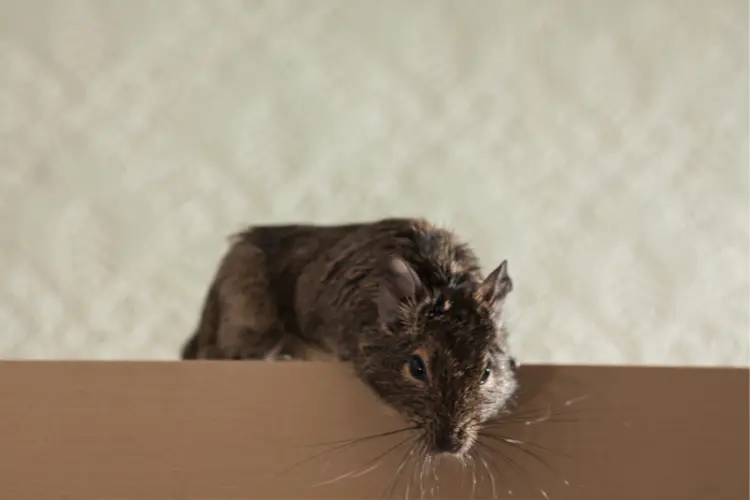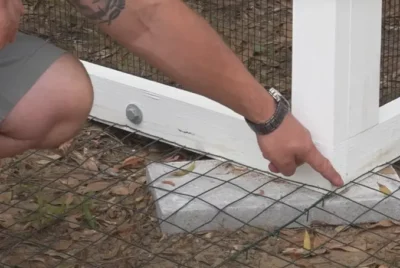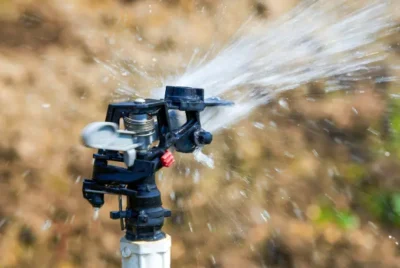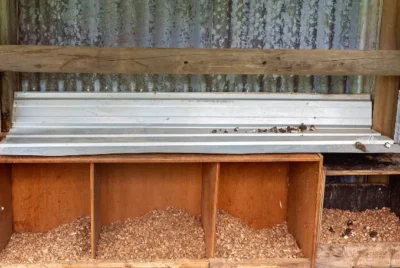How To Effectively Rodent-Resistant Your Chicken Feeder
Rodents invading your chicken coop and getting into your poultry feed can be a frustrating and potentially hazardous problem. Not only do these unwanted guests consume valuable chicken feed, but they can also transmit diseases and compromise the overall hygiene of your coop.
To ensure the well-being of your flock and protect your feed investment, it’s crucial to implement effective rodent-resistant measures. In this comprehensive guide, we’ll walk you through the steps to effectively rodent-resistant your chicken feeder.
Table of Contents
- What are the Signs of Rodent Infestation
- Tips on How To Rodent-Resistant Your Chicken Feeder
- Step 1: Select the Right Feeder
- Step 2: Maintenance and Cleaning
- Step 3: Elevated Feeding Solutions
- Step 4: Use Rodent-Resistant Feeder Accessories
- Step 5: Proper Storage of Feed
- Step 6: Monitoring and Trapping
- Step 7: Use Natural Deterrents
- Step 8: Education and Training
- Step 9: Regular Inspections and Adaptations

What are the Signs of Rodent Infestation
- Droppings: Rodent droppings near the feeder or nesting areas.
- Gnaw Marks: Look for gnaw marks on feeders, housing, or nearby structures.
- Tracks or Tail Marks: These may be visible in dust or soft soil around the coop.
- Noises: Scratching or scurrying sounds, especially at night.
- Nests: Rodents may create nests from shredded materials.
- Food Tampering: Evidence of feed being eaten or contaminated.
Potential Risks Posed by Rodents:
- Disease Transmission: Rodents can carry diseases harmful to chickens and humans, such as Salmonella.
- Feed Contamination: They can contaminate chicken feed with their droppings, urine, or fur.
- Stress to Chickens: Their presence can stress chickens, affecting their health and egg production.
- Property Damage: Rodents can cause structural damage to coops and feeders through gnawing.
Tips on How To Rodent-Resistant Your Chicken Feeder
Step 1: Select the Right Feeder
Choosing a Feeder Design that Minimizes Rodent Access
When choosing a feeder design, it’s important to look for features that discourage rodent access. Gravity-fed feeders rely on the chicken’s weight to open access to feed, preventing rodents from easily reaching the feed.
Treadle feeders require the weight of the chicken to open a door, making it nearly impossible for rodents to access the feed. These designs are effective in keeping rodents away from your chickens’ food.
Evaluating Different Feeder Materials and Their Durability
Selecting the right materials for your chicken feeder is equally important. Rodents are known for their gnawing abilities, so choosing materials that are resistant to their efforts is crucial. Also, materials like metal or hard plastic are less susceptible to rodent damage than wood, which rodents can easily chew through.
Additionally, ensure that the feeder is well-constructed and durable to withstand outdoor conditions and potential wear and tear.
Proper Sizing of Feeders for Your Flock
Properly sizing your chicken feeder is essential to prevent overcrowding and waste. Choose a feeder size that matches the number of chickens you have. Overcrowding at the feeder can lead to competition among chickens and spilled feed, which can attract rodents. If you have a large flock, consider using multiple feeders to distribute feed evenly and reduce overcrowding.

Step 2: Maintenance and Cleaning
Regular Cleaning to Prevent Food Residue Buildup
Regularly clean your chicken feeder to prevent the buildup of food residues. Over time, spilled or uneaten feed can accumulate in the feeder, creating an attractive food source for rodents.
Use a brush or scraper to remove any caked-on feed or residues inside the feeder. Clean the feeder thoroughly with water and a mild detergent, freeing it from any remnants that could entice rodents.
Removing Spilled Feed Promptly
It’s important to promptly remove any spilled feed around the feeder area. Chickens can be messy eaters, and feed that falls on the ground can become an easy target for rodents.
Use a broom or scoop to gather and dispose of spilled feed regularly. By keeping the coop area clean, you reduce the chances of rodents being attracted to the coop.
Keeping the Area Around the Feeder Clean and Free of Debris
In addition to cleaning the feeder itself, maintain the cleanliness of the area surrounding it. Remove any debris, litter, or other materials that can provide hiding spots or attract rodents.
Trim vegetation around the coop to eliminate hiding places for rodents, as tall grass or shrubs can offer cover for them.
Read also: How To Maintain Chicken Coop for Long-Term Predator Protection
Step 3: Elevated Feeding Solutions
Elevating Feeders to Make it Difficult for Rodents to Access
One of the primary goals of elevating feeders is to raise them to a height that rodents find challenging to reach. Position the feeders at a convenient height for your chickens, ideally around chest height. This makes it difficult for rodents like rats and mice to climb up and access the feed. Moreover, elevating the feeders also reduces the risk of contamination from rodents’ droppings.
Installing Hangers or Pulley Systems for Hanging Feeders
Hanging feeders from hangers or pulley systems is an excellent way to keep feeders elevated and out of reach for rodents. These systems allow you to adjust the feeder’s height easily. Ensure that the hanging mechanism is secure and can support the weight of the feeder and the feed.
Building or Buying Elevated Feeder Stands
You can build or purchase dedicated elevated feeder stands or platforms to hold chicken feeders. These stands can be placed at a suitable height to deter rodents. When building your own stand, ensure it is sturdy, stable, and resistant to rodent damage.
Elevating feeders reduces the risk of rodent infestation and minimizes waste by preventing chickens from scratching and spilling feed on the ground. It provides a cleaner and more hygienic feeding environment for your flock.

Step 4: Use Rodent-Resistant Feeder Accessories
Adding Baffle Guards to Prevent Climbing
Baffle guards are physical barriers that prevent rodents from climbing up to the feeder. You can attach baffle guards to the feeder stand or the feeder itself. These guards create obstacles that rodents cannot easily navigate, making it challenging for them to reach the feed. Baffle guards are particularly effective in combination with elevated feeders.
Installing Weight-Activated Doors or Lids
Weight-activated doors or lids are designed to open only when a heavier chicken steps on them. This mechanism ensures that the feeder is accessible to your chickens while remaining closed to rodents.
These doors or lids are effective in preventing rodents from entering the feeder and contaminating the feed. Ensure that the weight threshold is set correctly to accommodate your chickens’ weight.
Using Anti-Rodent Feed Covers
Anti-rodent feed covers are specialized covers designed to fit securely over your chicken feeder. They are made from materials that rodents cannot easily chew through or manipulate. These covers not only protect the feed from contamination but also deter rodents from attempting to access the feeder. Ensure the cover fits tightly to prevent any gaps.
Step 5: Proper Storage of Feed
Storing Chicken Feed in Sealed Containers
Store your chicken feed in sealed containers that are specifically designed to be rodent-resistant. These containers should have tight-fitting lids and be made of materials that rodents cannot easily chew through, such as metal or durable plastic.
Transfer feed from bags to these containers to eliminate potential entry points for rodents. Keeping feed in sealed containers ensures that it remains secure and uncontaminated.
Avoiding Overstocking of Feed
Avoid overstocking your feed storage containers. Only store the amount of feed that your chickens will consume within a reasonable timeframe. Overstocking can lead to feed spillage, which attracts rodents. Rotating feed regularly helps ensure that older feed doesn’t sit for extended periods, reducing the chances of it becoming a target for rodents.
Regularly Inspecting and Maintaining Feed Storage Areas
Frequently inspect your feed storage areas for signs of rodent activity. Look for rodent droppings, gnaw marks, or any breaches in the containers. If you identify any problems, address them promptly.
Repair any damaged containers, reinforce storage areas, and consider setting up traps or rodent deterrents in the vicinity. Regular maintenance and vigilance can help prevent infestations from occurring.

Step 6: Monitoring and Trapping
Setting Up Rodent Traps and Bait Stations Near the Feeder
To actively deter rodents, place rodent traps and bait stations near the chicken feeder but away from chicken access. Common types of traps include snap traps, electronic traps, and live traps.
Additionally, bait stations are designed to safely contain rodenticide bait, reducing the risk of exposure to non-target animals. Ensure that traps and bait stations are positioned in areas where rodents are likely to travel, such as along paths or walls.
Monitoring and Assessing the Effectiveness of Trapping Methods
Regularly check the bait stations and traps to assess their effectiveness. Remove any captured rodents promptly. Evaluate which trapping methods are working best in your specific situation. If one method is ineffective, consider trying different types of traps or adjusting their placement.
Monitoring also allows you to gauge the extent of the rodent problem and make necessary adjustments to your pest control strategy.
Addressing Any Emerging Rodent Issues Promptly
If you notice an increase in rodent activity or signs of infestation despite your prevention efforts, take immediate action. Rodent populations can multiply rapidly, so addressing issues promptly is crucial.
Review your rodent-proofing measures, repair any potential entry points, and reinforce deterrents. You may also need to consider consulting with a pest control professional for more advanced methods if the problem persists.

Step 7: Use Natural Deterrents
Planting Rodent-Repelling Herbs or Flowers Around the Coop
Certain herbs and flowers are known for repelling rodents due to their strong scents. Consider planting rodent-repelling herbs and flowers around the coop and feeder area.
Examples of such plants include mint, lavender, rosemary, and marigolds. These plants can help deter rodents with their natural fragrance.
Using Essential Oils or Scents that Deter Rodents
Essential oils with strong scents that rodents find unpleasant can be used to create deterrent sprays. Mix essential oils like peppermint, eucalyptus, or citronella with water and spray the mixture around the coop and feeder area. Refresh the scent or oils regularly to maintain its effectiveness. Rodents are sensitive to strong smells and may avoid areas with these scents.
Encouraging Natural Predators Like Barn Owls or Cats
Natural predators of rodents, such as barn owls and cats, can play a significant role in rodent control around your chicken coop. Consider providing suitable nesting or shelter options for barn owls to encourage them to make your property their home. Cats are also effective at deterring rodents and can be introduced to the area to help keep rodent populations in check.
Step 8: Education and Training
Educating Yourself and Your Poultry Keepers About Rodent Prevention
Start by educating yourself and anyone responsible for caring for your chickens about rodent prevention measures. Ensure that they know the signs of rodent infestation, the risks posed by rodents, and the preventive steps outlined in the previous steps. Knowledge about rodent behavior and prevention techniques is crucial for effective control.
Training Chickens to Eat from the Feeder, Not the Ground
Chickens are natural foragers, and they may scratch and peck at the ground, often spilling feed. Train your chickens to eat from the feeder by initially placing some feed in the feeder and gently encouraging them to use it.
Over time, they will learn to associate the feeder with food. Minimizing ground feeding reduces the attraction of rodents to spilled feed.
Promoting Good Hygiene Practices to Reduce Attractants
Teach and enforce good hygiene practices in and around the coop. Emphasize the importance of promptly removing spilled feed, cleaning feeders, and maintaining a clean environment. Proper waste disposal and regular cleaning help eliminate attractants for rodents. Educate poultry keepers on how their actions can contribute to rodent prevention.
Read also: How To Train Your Chickens to Go Into the Chicken Coop at Night
Step 9: Regular Inspections and Adaptations
Scheduled Checks of Feeders and Their Rodent-Proofing Measures
Establish a schedule for routine checks of your feeders and the rodent-proofing measures you’ve implemented. This should include inspecting the feeders themselves, checking for signs of rodent activity, and ensuring that all rodent-resistant accessories and mechanisms are in good working condition. Scheduled checks help you identify and address issues before they escalate.
Adjusting Strategies Based on Changing Seasons and Rodent Behavior
Rodent behavior can vary with changing seasons, weather conditions, and other factors. Be prepared to adjust your rodent prevention strategies accordingly.
For example, rodent activity may increase during colder months as rodents seek shelter and food sources. Adjust baiting and trapping methods or reinforce deterrents as needed based on the season and observed rodent behavior patterns.
Continuously Improving and Refining Your Rodent-Resistant Techniques
Rodent prevention is an ongoing process, and there is always room for improvement. Continuously seek opportunities to refine and enhance your rodent-resistant techniques.
Stay informed about the latest developments in rodent prevention and incorporate new methods or technologies that may improve the effectiveness of your approach. Learn from your experiences and adapt your coop strategies accordingly.
By following these comprehensive steps, you can effectively rodent-resistant your chicken feeder and maintain a clean, healthy environment for your flock. Protect your chickens and their feed from unwanted rodent intruders and enjoy the benefits of a worry-free coop.





